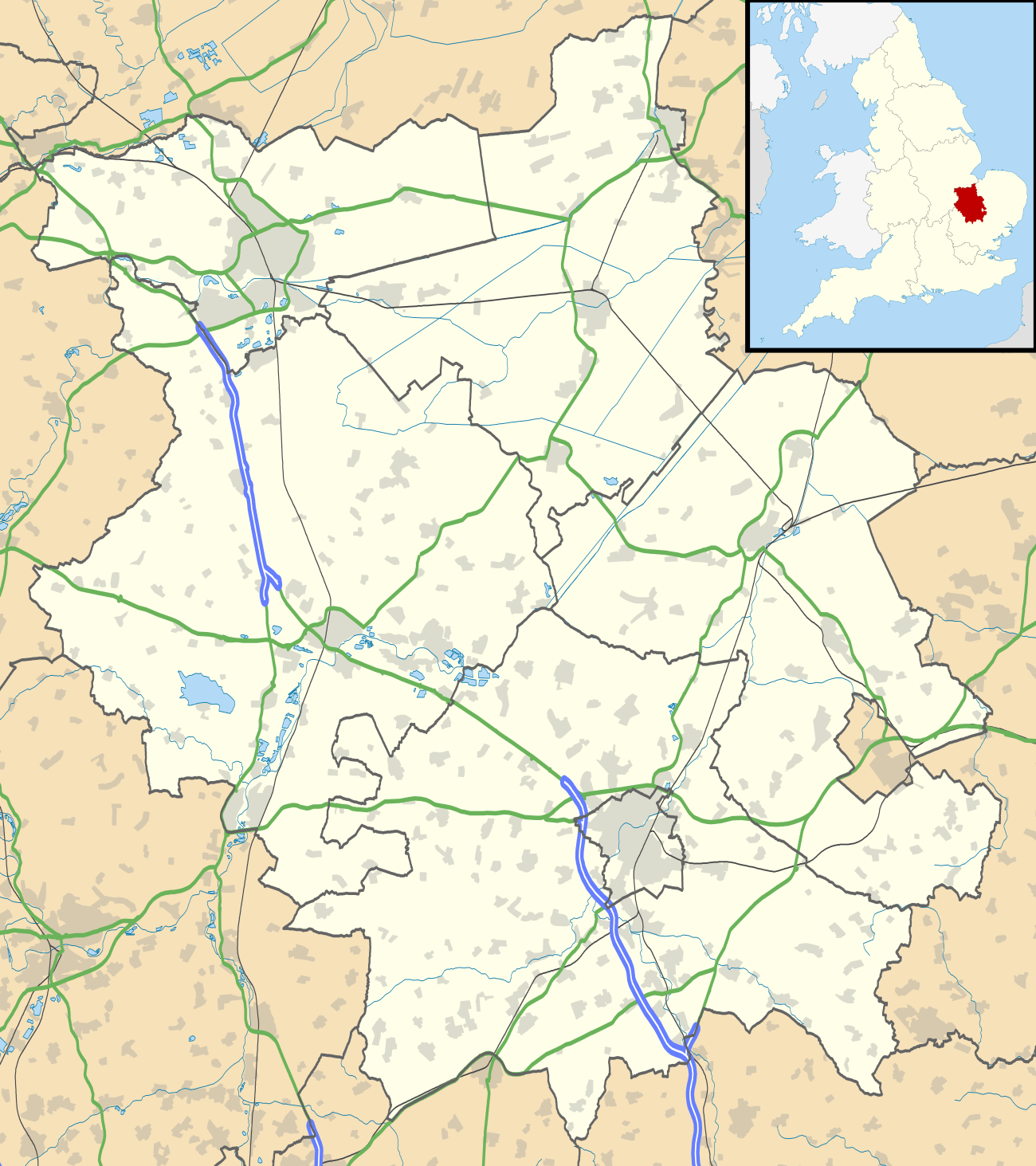RAF Castle Camps
RAF Castle Camps was listed as being in Cambridgeshire as it is close to its namesake Cambridgeshire village. It is very near the Suffolk border and the airfield straddled the Essex and Cambridgeshire county border. Construction of the station was started in September 1939. It opened as a satellite of RAF Debden in June 1940 and became a satellite of RAF North Weald in July 1943.
RAF Castle Camps | |||||||||||||||||||
|---|---|---|---|---|---|---|---|---|---|---|---|---|---|---|---|---|---|---|---|
| Summary | |||||||||||||||||||
| Airport type | Military | ||||||||||||||||||
| Operator | Royal Air Force | ||||||||||||||||||
| Location | Castle Camps, Cambridgeshire | ||||||||||||||||||
| Elevation AMSL | 420 ft / 128 m | ||||||||||||||||||
| Coordinates | 52°03′05″N 000°22′43″E | ||||||||||||||||||
| Map | |||||||||||||||||||
 RAF Castle Camps Location in Cambridgeshire | |||||||||||||||||||
| Runways | |||||||||||||||||||
| |||||||||||||||||||
During the Battle of Britain, one of the units operating from Castle Camps was 85 Squadron, whose Hawker Hurricanes were commanded by Peter Townsend.
The airfield was used by numerous squadrons throughout the Second World War. In 1945, it was commanded by Battle of Britain ace Tim Vigors.[2] It closed in January 1946.
Operational Units and Aircraft
| Unit | From | To | Aircraft | Version | Notes |
|---|---|---|---|---|---|
| No. 85 Squadron RAF | 23 May 1940 3 September 1940 | 19 August 1940 5 September 1940 | Hawker Hurricane Hawker Hurricane | I I | As a detachment.[3] Full strength.[3] |
| No. 73 Squadron RAF | 5 September 1940 | 6 November 1940 | Hawker Hurricane | I | [4] |
| No. 157 Squadron RAF | 18 December 1941 | 15 March 1943 | de Havilland Mosquito | II | [5] |
| No. 605 Squadron RAF | 15 March 1943 | 6 October 1943 | de Havilland Mosquito | II/VI | [6] |
| No. 456 Squadron RAF | 29 March 1943 | June 1943 | Bristol Beaufighter de Havilland Mosquito | IIF II/VI | [7] |
| No. 527 Squadron RAF | 15 June 1943 | 28 February 1944 | Bristol Blenheim Hawker Hurricane de Havilland Hornet Moth | IV I | Formed here.[8] |
| No. 91 Squadron RAF | 29 February 1944 | 17 March 1944 | Supermarine Spitfire | XII/XIV | [9] |
| No. 486 Squadron RAF | 6 March 1944 29 March 1944 | 21 March 1944 29 April 1944 | Hawker Typhoon | IB | [10] |
| No. 410 Squadron RAF | 30 December 1943 | 29 April 1944 | de Havilland Mosquito | XIII | [11] |
| No. 68 Squadron RAF | 23 June 1944 | 28 December 1944 | de Havilland Mosquito | XVII/XIX | [12] |
| No. 151 Squadron RAF | 8 October 1944 | 19 November 1944 | de Havilland Mosquito | XXX | [13] |
| No. 25 Squadron RAF | 27 October 1944 | 14 July 1945 | de Havilland Mosquito | XXX/VI | [14] |
| No. 307 Squadron RAF | 27 January 1945 | 31 May 1945 | de Havilland Mosquito | XXX | [15] |
Current use
The site has reverted to agricultural use. However the outlines of portions of the runways in the fields (when viewed on Google Earth), can still be seen and some of the perimeter roads are even now in use as farm tracks.
Some of the airfield buildings are still present and being used by local farms and industry.
References
Citations
- Bones Aviation Page: A Catalogue of UK Airfields
- Tim Vigors, "Life's Too Short to Cry", p. 235
- Jefford 1988, p. 50.
- Jefford 1988, p. 47.
- Jefford 1988, p. 63.
- Jefford 1988, p. 99.
- Jefford 1988, p. 93.
- Jefford 1988, p. 96.
- Jefford 1988, p. 52.
- Jefford 1988, p. 94.
- Jefford 1988, p. 90.
- Jefford 1988, p. 46.
- Jefford 1988, p. 62.
- Jefford 1988, p. 33.
- Jefford 1988, p. 85.
Bibliography
- Brazier, Roy (2011) History of RAF Castle Camps: a Unique Airfield, 1940-47. ISBN 0-95365-182-7
- Jefford, C G (1988). RAF Squadrons. A comprehensive record of the movement and equipment of all RAF squadrons and their antecedents since 1912. Shrewsbury: Airlife. ISBN 1-85310-053-6.
External links
| Wikimedia Commons has media related to RAF Castle Camps. |
- Castle Camps Village, Airfield webpage
- Hawker Tempest Page: History Hawker Tempest at RAF Castle Camps
- 605 Squadron Website: History of 605 Squadron
- Polish Squadrons Remembered: No. 307 Squadron History
